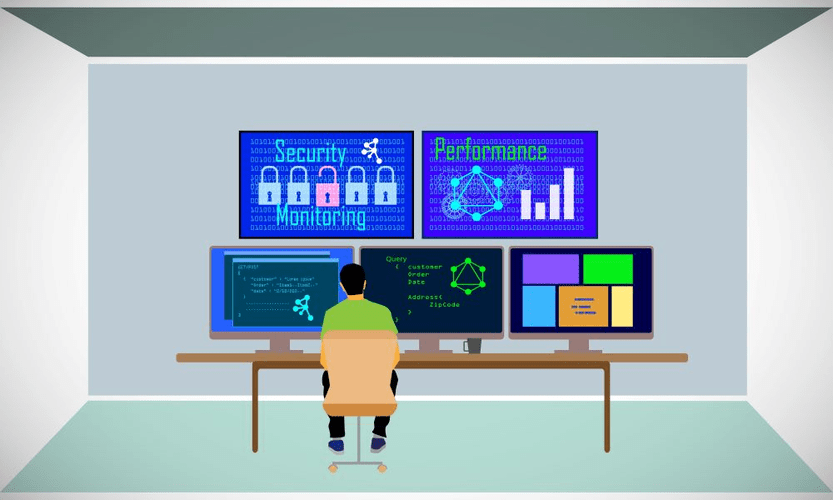Содержание
If that is the case, the leader may need to step in to assist the team through these changes. However, generally, the leader is more involved with delegating and overseeing the process during this stage. Note that teams can lapse back into earlier stages when changes occur with personnel or the project itself. Ideally, the end of this phase is the successful completion of the project.
A team cannot be expected to perform well right from the time it is formed. It takes time, patience, requires support, efforts and members often go through recognizable stages as they change from being a collection of strangers to a united group with common goals. For example, many groups or teams formed in a business context are project-oriented and therefore are temporary. Alternatively, a working group may dissolve due to organizational restructuring. For those who like routine and bond closely with fellow group members, this transition can be particularly challenging. Group leaders and members alike should be sensitive to handling these endings respectfully and compassionately.
- The team is formed and everyone shows their best behaviour.
- If that is the case, the leader may need to step in to assist the team through these changes.
- Team members start to resolve their differences, appreciate colleagues’ strengths, and respect the leader’s authority.
- If the team’s objectives are not aligned, there can be mistakes and missed opportunities.
- The performing stage is a clear indication that your team is in a state of alignment.
- You recognize this isn’t any one team member’s fault, but you want to make it right.
A plants ideas and energy may decrease quickly if there are too many monitor evaluators as these people will motivate the plants by constantly pointing out the flaws in their ideas. Use personality tests, such as the ones outlined in the article, to aid the understanding of each others personality and work styles. This is about completion and https://globalcloudteam.com/ disengagement, both from the tasks and the group members. Individuals will be proud of having achieved much and glad to have been part of such an enjoyable group. They need to recognise what they’ve done, and consciously move on. Some authors describe stage 5 as “Deforming and Mourning”, recognising the sense of loss felt by group members.
In the first two stages of Tuckman’s model , shapers are a good addition to the team because they provide a good balance and ensure that discussion are turned into results. These bad relationships will cause problems and affect the groups performance later on. In 1965, Bruce Tuckman, an educational psychologist developed one of the most influential models for group formation.
A sense of belongingness is established and the group remains focused on the group’s purpose and goal. Questions around leadership, authority, rules, policies, norms, responsibilities, structure, evaluation criteria and reward systems tend to arise during the storming stage. Such questions need to be answered so that the group can move further on to the next stage. In the in the third stage, norming, co-ordinators are still needed to facilitate the groups decisions. The addition of some implementers to the team is also a good idea to make plans for progress and team development. Finally, a resource investigators is needed to go outside of team and look at competition.
Employees rely on each other, collaborate effectively and there’s a more lighthearted feel to the group. At this point, you recognize that your team has grown significantly and is capable of achieving big things together. They feel confident and comfortable when approaching you with concerns and questions.
An Overview Of The Five Stages And Team Development
Finally, they should ensure the team can resolve internal conflicts and disagreements. At this stage, the team’s routine and norms become stable and change infrequently. The team may start thinking strategically about their work and balance work on initiatives and process improvements. Storming starts when conflicts and competition emerge in the team. At this stage, the team goals may already be clear, although its members may have different views on the best ways to achieve them.

Not all groups reach this stage, characterised by a state of interdependence and flexibility. Everyone knows each other well enough to be able to work together, and trusts each other enough to allow independent activity. Roles and responsibilities change according to need in an almost seamless way. Group identity, loyalty and morale are all high, and everyone is equally task-orientated and people-orientated.
Often this can be accomplished by finding some common ground. Members also begin to explore group boundaries to determine what will be considered acceptable behavior. ” This trial phase may also involve testing the appointed leader or seeing if a leader emerges from the group.
Some team members may find this hard because they liked the routine of the group, have made close friendships or if the future, after leaving this team, looks bleak and unpromising. Thus, the researchers study about the group development to determine the changes that occur within the group. The co-creation stage, when the focus shifts towards developing group outputs. They know and rely on each other’s strengths and can work together to achieve ambitious goals and meet deadlines.
It’s Time To
At this point, relationships are formed and there is a clear and stable structure. The team is mature, organised and has a sense of consensus and cooperation. Problems and conflict, of course, do still arise, but they are dealt with effectively. The prime focus of the team is on problem solving and meeting goals; effectiveness is at its peak.

But for us the real value is in recognising where a group is in the process, and helping it to move to the Perform stage. In the real world, groups are often forming and changing, and each time that happens, they can move to a different four stages of group development Tuckman Stage. A group might be happily Norming or Performing, but a new member might force them back into Storming. Seasoned leaders will be ready for this, and will help the group get back to Performing as quickly as possible.
The Stages Of Group Formation, And How They Aid Your Teams Success
Though Tuckman presented the different phases as a linear model, it is important to realize that in practice, the phases are rather fluid and group formation is not always a linear process. At the Performing Stage, managers can expect the team to start delivering predictable results and meeting deadlines. They can delegate more responsibilities to the team and focus on more strategic work. Furthermore, team members may encounter unexpected difficulties, feel lost and overwhelmed, and disillusioned and disappointed with their new team. Managers need to support each team member and ensure they can contribute and their peers are not blocking them.

Digital Knowmad | Multipotentialite | HR Leader | Transformation Agent | Future of Work thinker | On a mission to re-embed Human into HR. Group interaction are lot more easier, more cooperative, and productive, with weighed give and take, open communication, bonding, and mutual respect. At this stage, group members are learning what to do, how the group is going to operate, what is expected, and what is acceptable. Self-evaluation process to make groups cooperate more effectively.
Signs And Questions To Look Out For In The Performing Stage
The team, which will potentially remain the same in a smaller company or startup, can now move on to the next project. In this stage, members of the design team establish the models and processes for leadership, teaching, learning, and management that will be used once the school is running. The design team will also develop the school proposal and secure autonomy agreements.
This gives them an opportunity to recognize their abilities as well as those of their teammates. Your team asks questions formulated in ways that are rooted in emotional intelligent practices. You approach your team to learn about their bottlenecks, roadblocks and concerns. You come to realize that, by involving yourself, they’re burdened by an apprehension to speak up and would rather spend time rectifying the situation. You recognize this isn’t any one team member’s fault, but you want to make it right. The last thing you want to experience is team members who de-value one another or collectively fall behind.
Forming Stage
School leadership teams in this stage know how to run their teacher- powered school. Team members are motivated to achieve goals set by the team, and they operate competently within established structures. The members may already know each other or they may be total strangers. In either case, there is a level of formality, some anxiety, and a degree of guardedness as group members are not sure what is going to happen next.
Correcting Performance And Behavior
Interestingly enough, just as an individual moves through developmental stages such as childhood, adolescence, and adulthood, so does a group, although in a much shorter period of time. According to this theory, to successfully facilitate a group, the leader needs to move through various leadership styles over time. While research has not confirmed that this is descriptive of how groups progress, knowing, and following these steps can help groups be more effective. For example, groups that do not go through the storming phase early on will often return to this stage toward the end of the group process to address unresolved issues. Another example of the validity of the group development model involves groups that take the time to get to know each other socially in the forming stage.
How can I further develop as a person to become more effective? ” By now, the group has matured, becoming more competent, autonomous, and insightful. Group leaders can finally move into coaching roles and help members grow in skill and leadership. Participants focus less on keeping their guard up as they shed social facades, becoming more authentic and more argumentative. Group members begin to explore their power and influence, and they often stake out their territory by differentiating themselves from the other group members rather than seeking common ground. Discussions can become heated as participants raise contending points of view and values, or argue over how tasks should be done and who is assigned to them.
Since the group’s energy is running high, this is an ideal time to host a social or team-building event. About 10 years after Tuckman created his original 4-stage model, he then added a fifth stage, which is Adjourning. More often in the corporate world, cross-functional teams will be formed for a project and then disperse at the end of the project. However, before moving on to the next project, it can be beneficial for the leader to overview with the team their successes and challenges , as well as celebrating their accomplishment. At the Performing stage, managers should keep encouraging team decision-making and problem solving as the team members have the knowledge, experience, and trust in each other.
This high degree of comfort means that all the energy of the group can be directed towards the task in hand. Tuckman described the four distinct stages that a group can as it comes together and starts to operate. This process can be subconscious, although an understanding of the stages can help a group reach effectiveness more quickly and less painfully. When all tasks are completed, it’s important to celebrate the team’s positive achievements. Letting go of the group structure after long periods of intensive team work can also generate uncertainty for individual team members.
It’s an ideal state for any manager to witness their team’s growth and ask reflective questions. This is the perfect team development stage to learn about how your team overcomes obstacles and bonds through shared experiences. This is because your team recognizes how they can trust you and each other in order to complete tasks, move towards their objectives and rely on each other for help. It’s the time where your team learns about upcoming projects and structures. Here, it’s typical for teammates to feel excited, anxious, and curious about what lies ahead. At this stage, the morale is high as group members actively acknowledge the talents, skills and experience that each member brings to the group.
” These are some of the questions participants think about during this stage of group formation. Because of the large amount of uncertainty, members tend to be polite, conflict-avoidant, and observant. They are trying to figure out the “rules of the game” without being too vulnerable. At this point, they may also be quite excited and optimistic about the task at hand, perhaps experiencing a level of pride at being chosen to join a particular group. Group members are trying to achieve several goals at this stage, although this may not necessarily be done consciously.
Perhaps you already run a teacher-powered school and are seeking ways to strengthen your team, modify your processes, or manage internal changes in leadership. Tuckman’s model explains that as the team develops maturity and ability, relationships establish, and the leader changes leadership style. Beginning with a directing style, moving through coaching, then participating, finishing delegating and almost detached. At this point, the team may produce a successor leader and the previous leader can move on to develop a new team. Individual behaviour is driven by a desire to be accepted by the others, and avoid controversy or conflict.
The second stage of group development is the storming stage. The 40 Best Virtual Team Building Activities for Remote Teams This article provides a guide to running team building games for remote and virtual teams. The team will begin to resolve their interpersonal differences, appreciate others and form working relationships. There is a sense of cohesion and unity and this allows for the team to work functionally together towards the end goal. At this point, performance increase as the team begins to cooperate and focus on the goals. Tuckman’s original work simply described the way he had observed groups evolve, whether they were conscious of it or not.
Posted on


Leave a Reply